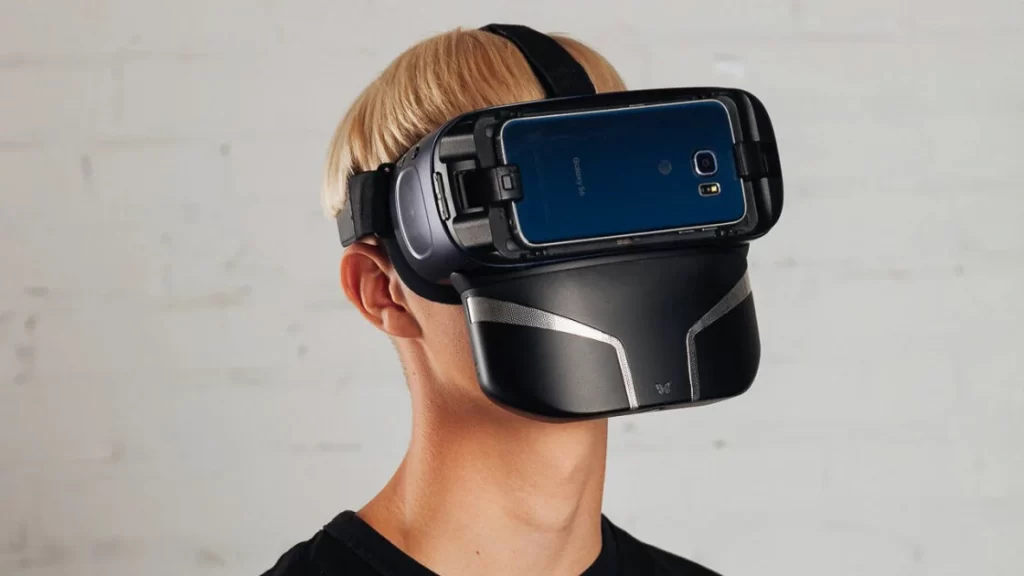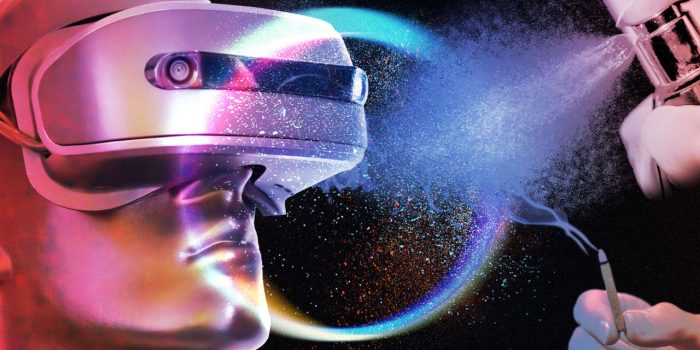Smell is one sense that virtual reality (VR) has yet to successfully incorporate into immersive visual and aural experiences. With their inventive technology that adds aroma to the virtual environment, Chinese researchers may have found a solution to this problem.
Previous attempts at introducing smells in VR environments involved cumbersome wearable devices that were inconvenient for users. In contrast, the streamlined system developed by Chinese scientists is applied directly to the skin beneath the user’s nose, eliminating the need for bulky accessories.
The experimental setup consists of two small devices called odor generators (OGs) mounted on a lightweight and flexible substrate material. This material is temporarily adhered to the skin above the upper lip. Each OG contains a differently scented paraffin wax and a thermal actuator. When wirelessly activated by a VR system, the actuator heats the wax, causing it to melt slightly and release its scent. Once the actuator is turned off, the wax cools down and returns to its solid state, minimizing any residual scent.

In a more advanced version of the system, a flexible face mask incorporates a total of nine OGs, each with a different odor. These OGs can be activated in numerous combinations and ratios, enabling a wide variety of scents to be produced. The scientists have already created approximately 30 different scents, ranging from familiar aromas like rosemary and pineapple to more adventurous ones like fresh-baked pancakes and the pungent durian fruit.
In lab tests with 11 participants, the system was proven to be effective, with an average success rate of 93% in identifying the odors produced by the technique. This accomplishment demonstrates the system’s potential for usage in a variety of applications, including human-machine interactions, entertainment, education, and healthcare.

The study’s principal investigator, Dr. Yu Xinge of City University of Hong Kong, and Dr. Li Yuhang of Beihang University, underlined the benefits of the new olfactory system. According to him, “the high odor generator integration density, the fast response rate in releasing odors, and two wearable designs ensure great potential for olfaction interfaces in various applications.”
As technology continues to push the boundaries of immersion in virtual experiences, the integration of smell into VR environments opens up exciting possibilities for users to engage multiple senses and create more realistic and captivating simulations.


